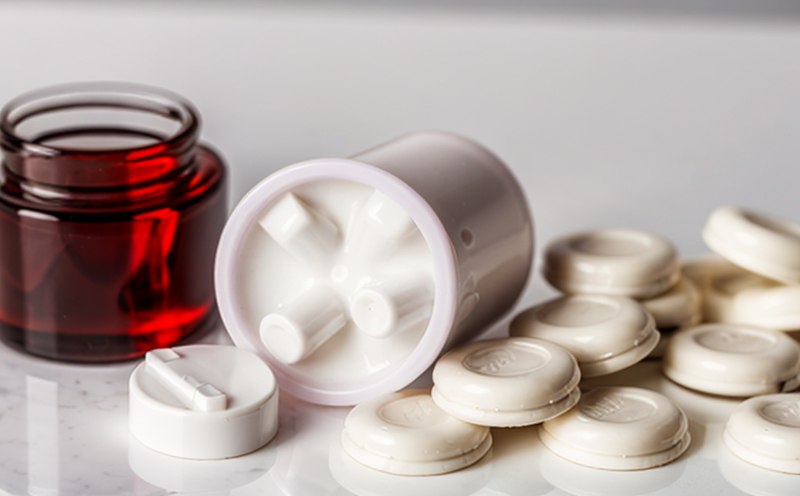USP Capsule Appearance Evaluation Testing
The USP Capsule Appearance Evaluation Testing is a critical process in ensuring that oral solid dosage forms meet the highest standards of quality and compliance. This testing method evaluates capsules according to United States Pharmacopeia (USP) specifications, which are widely recognized as the gold standard for pharmaceutical products.
During this evaluation, several key aspects of capsule appearance are scrutinized:
- Color Uniformity: Capsules must have a consistent color across their surface. Any variations can indicate issues in manufacturing or quality control.
- Capsule Closure: The integrity and closure of the capsule seam is crucial to ensure proper encapsulation and stability of the drug product inside.
- Surface Texture: Capsules should have a smooth, even texture free from defects such as scratches or discoloration. These can affect patient compliance and product quality.
- Size and Shape Consistency: Variations in size and shape can impact the uniformity of drug release and dosage accuracy.
The testing process involves several steps to ensure comprehensive evaluation:
- Initial Inspection: Visual inspection is conducted using high-resolution cameras or microscopes. This step identifies any obvious defects or inconsistencies in capsule appearance.
- Statistical Analysis: A sample of capsules undergoes detailed statistical analysis to determine the extent and nature of any deviations from USP specifications.
- Comparative Testing: Samples are compared against established reference standards to ensure conformity with USP criteria.
The importance of this testing cannot be overstated. It ensures that pharmaceutical products meet regulatory requirements, thereby safeguarding patient health and promoting public trust in the industry. Compliance with USP standards is essential for manufacturers aiming to achieve FDA approval or other international certifications.
For quality managers and compliance officers, this service provides a critical tool for maintaining product integrity and ensuring adherence to stringent regulatory guidelines. R&D engineers can benefit from detailed insights into capsule performance, while procurement teams gain assurance that the raw materials meet the required specifications.
Quality and Reliability Assurance
The reliability and quality of the testing process are paramount in ensuring consistent capsule appearance across batches. Quality assurance measures include:
- Standard Operating Procedures (SOPs): Clear SOPs ensure that all personnel follow a standardized procedure, reducing variability.
- Certification Training: Staff undergo regular training to maintain proficiency and stay updated on the latest USP guidelines.
- Regular Calibration: Equipment is regularly calibrated to ensure accurate measurements.
These measures contribute significantly to the dependability of the testing process, ensuring that capsules consistently meet or exceed USP standards. Reliability is further enhanced by continuous monitoring and improvement practices within the laboratory environment.
Customer Impact and Satisfaction
The success of pharmaceutical products largely depends on their quality and reliability. By adhering to USP Capsule Appearance Evaluation Testing, customers can be assured that:
- Product Consistency: Ensures that each batch of capsules is uniform in appearance.
- Regulatory Compliance: Meets strict regulatory standards set by agencies like the FDA and EMA.
- Patient Trust: Builds confidence among patients who rely on pharmaceutical products for their health.
Clients benefit from a more efficient supply chain, reduced risk of product recalls, and enhanced brand reputation. Satisfied customers contribute to long-term business success and growth for the manufacturer.
Environmental and Sustainability Contributions
The laboratory's commitment to environmental sustainability extends to its testing practices:
- Eco-Friendly Materials: Use of biodegradable materials in packaging reduces waste.
- Energy Efficiency: Advanced equipment minimizes energy consumption during the testing process.
These efforts not only contribute to a cleaner environment but also align with global sustainability goals. By adopting such practices, the laboratory upholds its responsibility towards environmental stewardship and supports sustainable development in the pharmaceutical industry.





